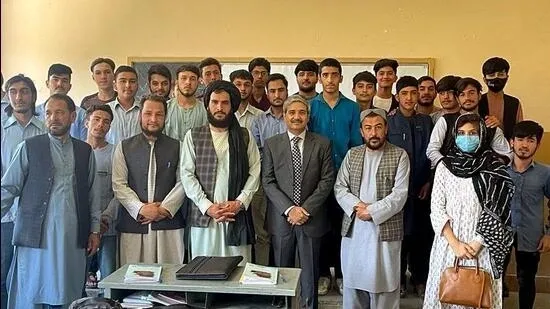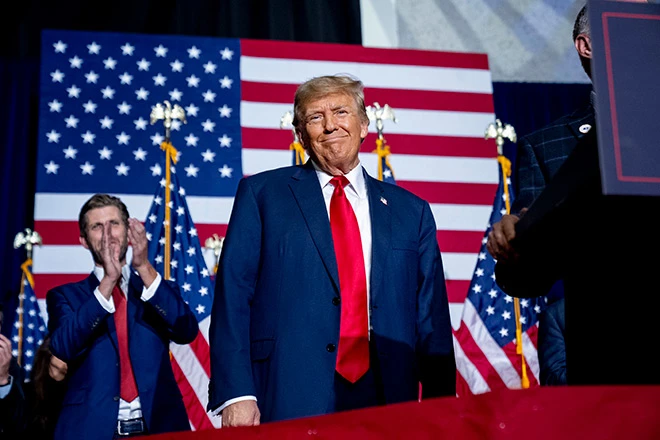
By Professor Habib Al-Badawi
Introduction
The historical panorama of Japan-U.S. relations provides a compelling overture to the complex narrative unfolding as Prime Minister Fumio Kishida grapples with the potential return of former President Donald Trump. This research note delves into the intricate tapestry of history, intertwining personal relationships, geopolitical dynamics, and the evolving landscape of international alliances.
In exploring the historical backdrop of Japan-U.S. relations, we unravel a story that goes beyond diplomatic formalities, revealing the nuanced dance between nations. The interplay of leaders, their personal connections, and the geopolitical currents that have shaped the alliance set the stage for Prime Minister Kishida’s contemporary challenges.
As we navigate through the chapters of this historical narrative, the unexpected passing of former Prime Minister Shinzo Abe looms large, casting a shadow over the continuity of alliances forged during the Trump era. The echoes of the Trump-Abe legacy resonate as Kishida seeks to chart a course in uncharted waters, balancing the lessons of the past with the demands of the present.
This research note aims to dissect the intricate threads that bind the historical and contemporary aspects of Japan-U.S. relations. The Trump-Abe legacy, characterized by camaraderie and shared vision, becomes a lens through which we examine the potential cooperation between Trump and Kishida. The delicate diplomacy, the reliance on trusted conduits like Taro Aso, and the internal dynamics within the Japanese administration contribute to the evolving narrative.
As we embark on this analytical journey, we scrutinize the challenges faced by the Kishida administration, particularly considering the U.S. presidential primaries and the looming possibility of a second Trump administration. The diplomatic nuances, strategic considerations, and the quest for continuity in a leadership transition underscore the complexities inherent in modern international relations.
- The Legacy of the Trump-Abe Alliance
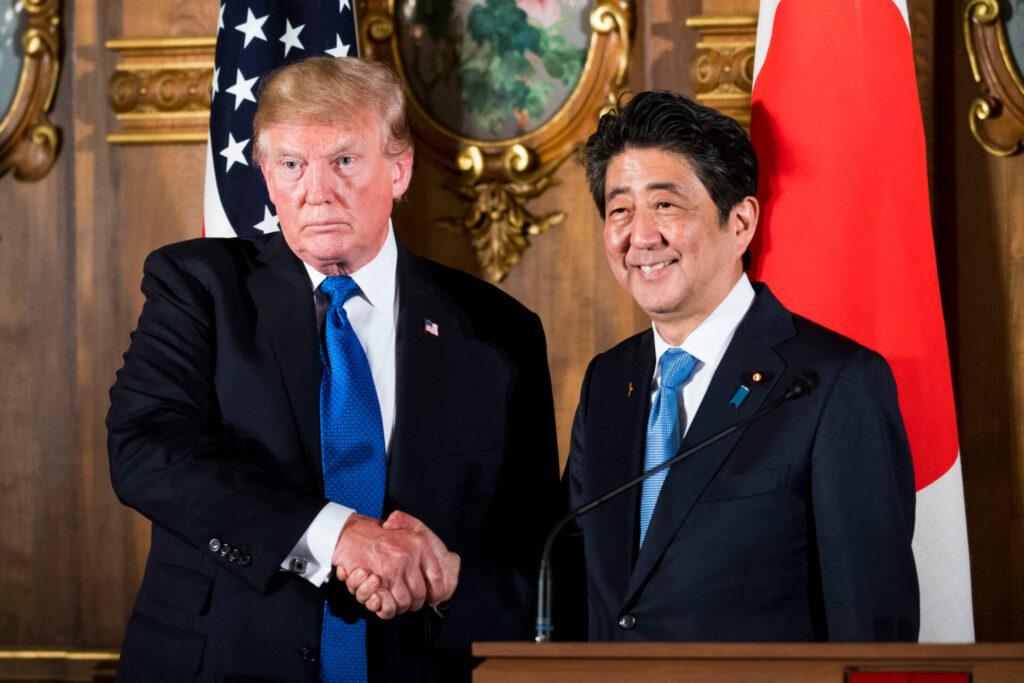
The Trump-Abe alliance, characterized by camaraderie and a shared vision, casts a poignant shadow over the anticipated Trump-Kishida cooperation. Golf outings and summit meetings during the tumultuous first Trump administration underscore the transformative power of personal connections in global politics.
The camaraderie between former Prime Minister Shinzo Abe and President Donald Trump became a hallmark of their diplomatic relationship. Beyond the formalities of summit meetings, the two leaders forged a personal connection evident in their joint activities, notably their shared love of golf. These outings were not mere leisure but became symbolic of the delicate touch that transcended diplomatic norms, fostering an understanding that extended beyond the confines of formal negotiations.
Summit meetings between Trump and Abe during the turbulent years of the first Trump administration further solidified their bond. These interactions laid the groundwork for a shared vision for a fortified U.S.-Japan alliance, a vision that went beyond policy agreements to encompass a personal commitment to the strength and endurance of the bilateral relationship.
Crucially, Abe’s adept communication skills played a pivotal role in navigating the challenges posed by Trump’s “America First” policy. As Trump advocated for prioritizing national interests and burden-sharing, Abe effectively communicated the mutual benefits of the U.S.-Japan alliance. His ability to articulate the symbiotic relationship between the two nations helped weather the storm of “America First,” resulting in a strengthened alliance that endured beyond the first Trump administration.
The legacy of the Trump-Abe alliance becomes a touchstone against which we examine the potential cooperation between Trump and Prime Minister Fumio Kishida. The question arises: can Kishida replicate the success of navigating “America First” without the linchpin of personal rapport that defined the Trump-Abe era? As we delve into the challenges facing the Kishida administration, the legacy of this transformative alliance becomes both a source of inspiration and a daunting shadow over diplomatic endeavours in the present day.
- Transitioning to the Kishida Era
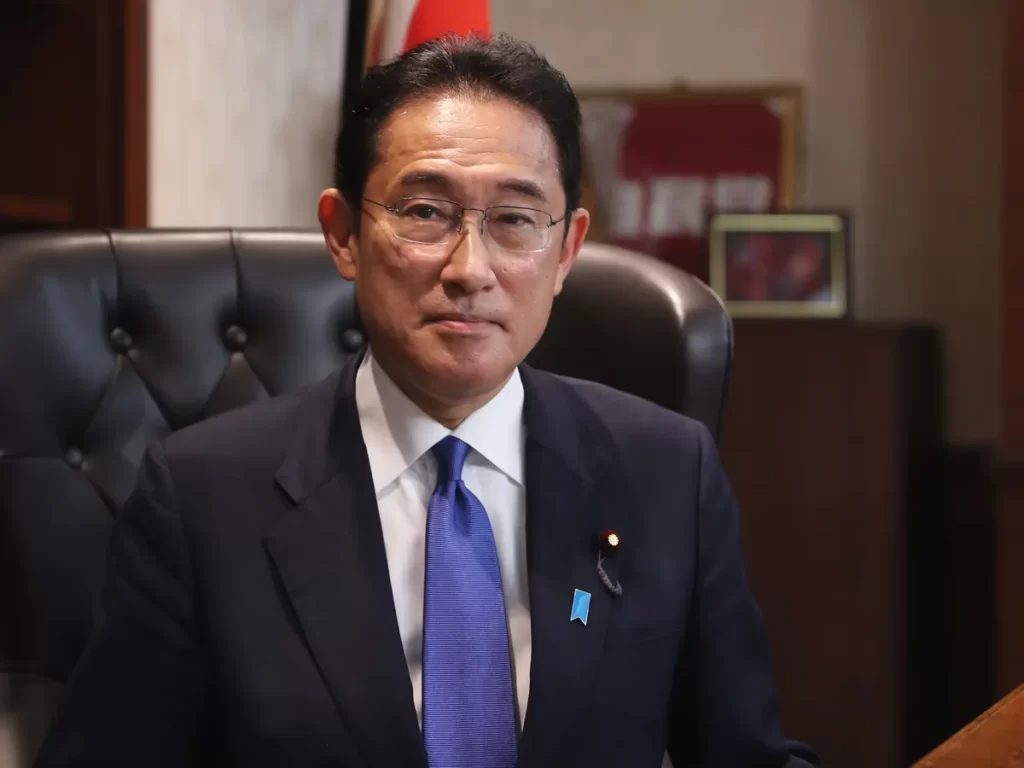
As Prime Minister Fumio Kishida takes the helm, the unexpected passing of Shinzo Abe leaves a void in the personal rapport that had come to define U.S.-Japan relations during the Trump era. Navigating these uncharted waters, Kishida faces the nuanced challenge of balancing historical lessons with the demands of the present geopolitical landscape, especially with the spectre of a potential second Trump administration.
The transition from the Trump-Abe era to the Kishida era is marked by a shift in leadership dynamics. Shinzo Abe’s influence on the U.S.-Japan alliance was not merely confined to policy matters; it was deeply rooted in the personal connection he cultivated with President Donald Trump. The question that looms large is whether Prime Minister Kishida can navigate the complexities of international diplomacy without the linchpin of personal rapport that characterizes the Trump-Abe alliance.
The unexpected passing of Shinzo Abe adds a layer of complexity to Kishida’s diplomatic endeavors. The void left by Abe’s absence necessitates a recalibration of strategies and approaches to dealing with the United States. The diplomatic playbook crafted during the Trump-Abe era may need adjustments to align with Kishida’s vision for the future of Japan-U.S. relations.
The challenges become particularly pronounced with the prospect of a potential second Trump administration. The success of the Trump-Abe alliance was not solely based on strategic calculations; it was, in large part, the result of personal camaraderie between the two leaders. As Kishida charts a course forward, he must grapple with the reality that this critical element of interpersonal connection is no longer readily available.
Kishida’s leadership will be evaluated on multiple fronts: maintaining the strength of the U.S.-Japan alliance, securing Japan’s interests in the face of evolving global dynamics, and effectively engaging with the unpredictable nature of U.S. politics. In this context, the Kishida era becomes a critical juncture that necessitates a delicate balance between continuity and adaptation, drawing from the lessons of history while responding effectively to the demands of the present and the uncertainties of the future geopolitical landscape.
- Kishida’s Dilemma: Trump’s Return and Alliance Dynamics
The urgency of Prime Minister Fumio Kishida’s diplomatic approach intensifies as the specter of former President Donald Trump’s return to office looms on the horizon. Trump’s dominance in polls and his victories in the Iowa caucuses and the New Hampshire primary have raised significant concerns within the Kishida administration, prompting a reassessment of Japan’s diplomatic strategy.
Kishida’s primary focus, until this point, has been on strengthening ties with President Joe Biden and his administration. Plans for a state-guest-level visit to the United States in April underline the commitment to bolstering the alliance under the current U.S. leadership. However, the dynamics have shifted with the potential return of Trump to the political forefront. While Biden remains the incumbent president, the uncertainties of the U.S. political landscape demand that Kishida navigate with equal dexterity the possibility of Trump securing the Republican nomination and winning the 2024 election.
The recent withdrawal of Florida Gov. Ron DeSantis, a staunch Trump supporter, and his endorsement of Trump leave Nikki Haley as the sole competitor in the Republican primaries. This development heightens the need for Japan to reassess its diplomatic strategy and preparedness for the potential return of a Trump administration. The challenges are further compounded by the constraints faced by the Japanese government in making official contact with Trump, who is currently a candidate rather than an incumbent.
In navigating this intricate diplomatic landscape, Kishida strategically relies on Taro Aso, the vice president of the ruling Liberal Democratic Party and a close ally of Shinzo Abe. Aso’s role becomes crucial as he acts as a conduit between the Japanese government and Trump. Having attended summits between Abe and Trump, Aso is well-positioned to complement the administration’s efforts to build relationships with the former president.
Aso’s recent visit to the United States, aimed at arranging a meeting with Trump, encountered scheduling conflicts related to the Republican primaries. Despite this setback, Aso’s commitment to securing a meeting reflects the importance of having trusted conduits in the ever-shifting landscape of diplomatic engagements. His unique position as a non-Cabinet member allows him to engage with Trump without the potential diplomatic pitfalls that a direct meeting between Kishida and Trump might pose for the Japan-U.S. relationship.
As the delicate dance between strengthening ties with the current U.S. administration and preparing for potential interactions with Trump unfolds, Kishida’s dilemma encapsulates the multifaceted nature of alliance dynamics in the ever-evolving landscape of international politics. The outcome of this diplomatic juggling act holds profound implications for Japan’s position on the global stage and the resilience of the U.S.-Japan alliance in the face of political uncertainties.
- Challenges within the U.S.-Japan Alliance

The Japanese government faces a myriad of challenges within the U.S.-Japan alliance, stemming primarily from the impact of Donald Trump’s “America First” policy and concerns regarding potential radical shifts in a second term. These challenges are compounded by the departure of Cabinet members who once played a moderating role, raising apprehensions about the unity of the Group of Seven (G7) and the U.S.-Japan alliance.
Trump’s “America First” policy, characterized by a focus on prioritizing U.S. interests over international alliances, has consistently raised concerns within Japan. One major point of contention revolves around the financial burden on Japan for U.S. forces stationed within its borders. While former Prime Minister Shinzo Abe successfully navigated this issue during the first Trump administration by explaining the mutual benefits of the U.S.-Japan alliance, the landscape has evolved, and uncertainties persist.
The departure of key Cabinet members who previously tempered Trump’s impulsive decisions introduces a new layer of complexity. The absence of stabilizing influences raises fears of potential challenges to the unity of the G7, a group that plays a crucial role in shaping global economic policies and addressing international challenges. Within the U.S.-Japan alliance, this development could impact the diplomatic equilibrium achieved during the first Trump administration, potentially leading to shifts in strategic priorities and cooperation.
Efforts have been initiated by the Kishida administration to strengthen Japan’s defense capabilities, a response to both regional security concerns and the evolving nature of the U.S.-Japan alliance. However, these efforts are not without hurdles. Challenges persist in critical areas such as the cyber domain. The increasing importance of cyber capabilities in modern warfare necessitates a comprehensive approach to address vulnerabilities and ensure the security of both nations.
Another area of concern is the review of restrictions on arms exports. While Japan has been taking steps to bolster its defense capabilities, restrictions on arms exports have implications for the collaborative development and production of defense technologies with other nations. This review reflects the delicate balance between enhancing Japan’s defense capabilities and navigating international sensitivities surrounding the arms trade.
The urgency to address these challenges is further amplified by the looming specter of a potential second Trump administration. Within the Japanese Foreign Ministry, there are apprehensions that a second term for Trump could bring even more radical policies, adding a layer of uncertainty to an already complex diplomatic landscape.
As the Kishida administration grapples with these challenges, the delicate dance between strengthening the U.S.-Japan alliance and preparing for potential shifts in international dynamics underscores the complexity of modern diplomacy. The strategic choices made in response to these challenges will not only shape the immediate trajectory of the alliance but also have long-term implications for Japan’s security policies on the international stage. The Kishida administration finds itself at a critical juncture, balancing the imperative of alliance maintenance with the necessity of proactive measures to safeguard Japan’s national interests in an ever-evolving global landscape.
- Internal Dynamics: Trust and Leadership
The Kishida administration grapples with internal dynamics that add a layer of complexity to its diplomatic challenges. The trust between Prime Minister Fumio Kishida and Taro Aso, vice president of the ruling Liberal Democratic Party (LDP) and a close ally of the late Shinzo Abe, has been strained by differences in their thinking about the role of LDP factions.
Internal discord within the LDP introduces challenges to the cohesion of the ruling party and, by extension, the stability of the administration. Trust, once a durable foundation between Kishida and Aso, is evaluated through the lens of these differences, creating an additional hurdle for effective collaboration. As Japan navigates the intricate dance of international relations, internal unity becomes crucial for presenting a united front on diplomatic matters.
The internal dynamics take on added significance considering former President Donald Trump’s preference for a “strong leader.” Trump’s affinity for leaders with assertive qualities introduces an additional layer of scrutiny from the Biden administration. The trajectory of the Kishida administration is closely observed, particularly as its public support remains stagnant.
The Biden administration’s vigilance is influenced by the backdrop of Trump’s unorthodox leadership style during his first term. Kishida’s leadership qualities, as perceived by both domestic and international audiences, have become a focal point in shaping the narrative of Japan-U.S. relations. The delicate balance of maintaining the U.S.-Japan alliance while navigating internal party dynamics becomes paramount.
Looking ahead, the upcoming LDP presidential election in September emerges as a crucial juncture for Prime Minister Kishida. His potential reelection within the LDP will not only determine the internal leadership of the ruling party but will also significantly impact Japan’s ability to face a new U.S. president, should that become a reality.
Strengthening the foundations of his administration becomes not only a strategic imperative for navigating international diplomatic challenges but also a political necessity for the stability of Japan’s leadership in an increasingly uncertain world. The internal dynamics within the LDP add a layer of significance to this election, as they will shape the party’s stance on critical issues, including foreign policy and the U.S.-Japan alliance.
Accordingly, the internal dynamics of trust and leadership within the Kishida administration underscore the intricate interplay between domestic politics and international relations. As Japan positions itself on the global stage, the ability to reconcile internal differences and project a united front becomes essential. The upcoming LDP presidential election stands as a pivotal moment, not only for the future of the ruling party but also for the trajectory of Japan’s engagement with the international community, particularly in the context of the ever-evolving dynamics of the U.S.-Japan alliance.
- Security Policies and Future Challenges
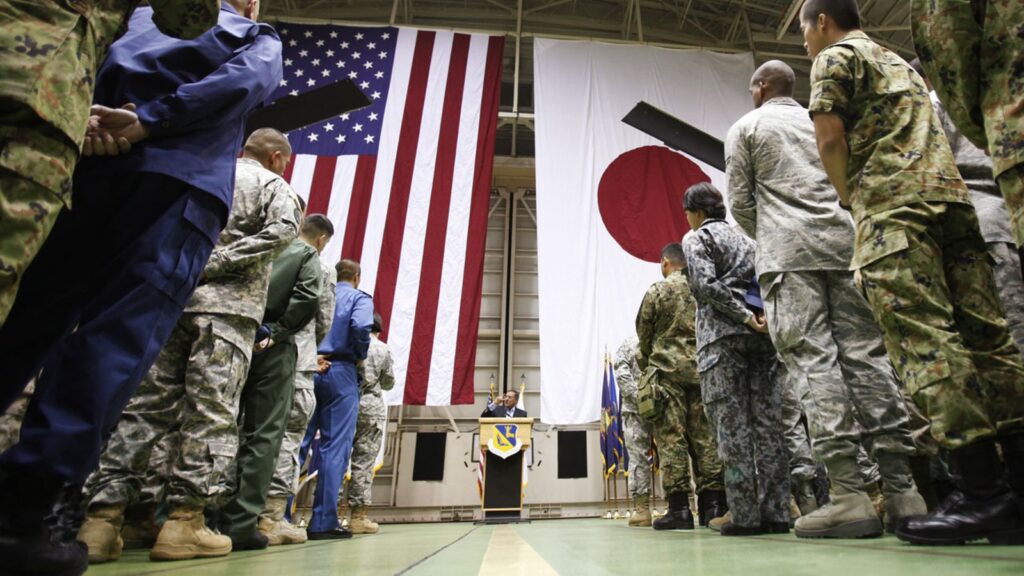
The Kishida administration has embarked on a strategic journey to bolster Japan’s defense capabilities, responding to the evolving geopolitical landscape. These efforts, however, are not without challenges, particularly in crucial areas like the cyber domain and the review of restrictions on arms exports.
In the realm of cybersecurity, Japan faces an increasingly complex and sophisticated threat landscape. As technology advances, potential vulnerabilities in critical infrastructure become more pronounced. The Kishida administration recognizes the imperative to fortify Japan’s cyber defences to protect against cyber-attacks that could target national security interests, economic stability, and overall societal well-being.
Moreover, the ongoing review of restrictions on arms exports is another intricate facet of Japan’s security policies. While there is a recognized need to enhance Japan’s defense capabilities, the delicate balance lies in ensuring responsible and ethical arms exports that align with the nation’s commitment to international peace and stability. Navigating this balance requires strategic policymaking that not only enhances Japan’s security posture but also aligns with global expectations and norms.
The potential return of former President Donald Trump for a second term introduces a layer of uncertainty to Japan’s security calculus. The prospect of radical policies raises concerns within the Foreign Ministry about the future direction of the U.S.-Japan alliance. Proactive measures are essential to anticipate and address potential shifts in alliance dynamics.
Championing Japan’s security policies on the international stage has become a proactive strategy for the Kishida administration. It involves not only reinforcing the importance of the U.S.-Japan alliance but also articulating Japan’s commitment to regional and global security. In doing so, Japan can position itself as a responsible and proactive player in the maintenance of international peace.
As the Kishida administration navigates these security challenges, it must adopt a forward-looking approach that considers both immediate concerns and long-term strategic goals. The potential radicalism of Trump’s second term, combined with the ever-evolving nature of cybersecurity threats, demands a comprehensive and adaptable security policy.
Finally, the Kishida administration’s commitment to strengthening Japan’s defense capabilities is commendable, but the path forward is fraught with challenges. Balancing the need for robust cybersecurity measures, addressing restrictions on arms exports, and navigating potential shifts in the U.S.-Japan alliance requires astute leadership and strategic vision. The proactive championing of Japan’s security policies on the international stage is not just a response to current challenges but a strategic investment in the nation’s resilience and standing in an ever-changing global landscape.
Conclusion: A Delicate Dance of Continuity and Innovation
In the grand tapestry of international relations, the intricate dance between Prime Minister Kishida, former President Trump, and President Biden paints a vivid picture of the challenges and complexities inherent in modern diplomacy. At the heart of this diplomatic ballet lies the imperative to skillfully navigate personal relationships, international alliances, and the intricacies of domestic politics.
As we draw the curtain on this exploration of Japan-U.S. relations, the historical echoes of the Trump-Abe alliance linger, casting a profound shadow over the anticipated Trump-Kishida cooperation. This alliance, forged during the tumultuous years of the first Trump administration, served as a testament to the transformative power of personal connections in shaping global affairs. The camaraderie, golf outings, and shared vision for a fortified U.S.-Japan alliance became emblematic of the potential impact such relationships can have.
The enduring impact of personal relationships prompts reflection on the necessity for adaptation in the face of evolving geopolitical realities. The global landscape is not frozen in time; it evolves, adapts, and responds to the ever-changing currents of international relations. As the world anticipates the unfolding of the Trump-Kishida era, it invites a closer examination of how this new alliance will leave its indelible mark on the canvas of international diplomacy.
Prime Minister Kishida, in navigating this delicate dance, faces the multifaceted challenge of balancing continuity and innovation. The legacy of the Trump-Abe alliance, marked by a close rapport and successful communication, adds a layer of complexity to the Kishida era. The unexpected passing of Shinzo Abe leaves a void that must be navigated with nuance, considering the potential return of Trump and the unique dynamics of the Biden administration.
The urgency of Kishida’s approach intensifies with the possibility of Trump’s return. The challenges presented by Trump’s “America First” policy, the intricacies of personal connections, and the need for proactive diplomacy become paramount. Taro Aso’s role as a trusted conduit reflects the importance of navigating this intricate diplomatic landscape with finesse.
Internal dynamics within the ruling Liberal Democratic Party add another layer of complexity. Trust strained by differences in thinking about LDP factions further underscores the challenges facing the Kishida administration. Trump’s preference for a “strong leader” adds dimension, drawing the attention of the Biden administration as they observe the trajectory of Kishida’s leadership.
Accordingly, the delicate dance of continuity and innovation is not just a diplomatic challenge for Japan but a global spectacle that unfolds against the backdrop of shifting political landscapes. The Trump-Kishida era, poised at the intersection of history and the present, can reshape the contours of U.S.-Japan relations.
As the narrative evolves, it beckons a thoughtful examination of the intricate interplay between personal connections, strategic imperatives, and the ever-changing dynamics of our world.
As the tapestry of Japan-U.S. relations unfolds, “Continuity and Change: Unraveling the Intricacies of Japan-U.S. Relations in the Trump-Kishida Expected Era” invites us to witness the nuanced dance between historical continuity and the winds of change. From the legacy of the Trump-Abe alliance, characterized by camaraderie and shared vision, to the present-day challenges faced by Prime Minister Fumio Kishida in navigating uncharted waters, the narrative unravels the complexities of international diplomacy.
In the face of the potential return of former President Donald Trump, the urgency of Kishida’s approach becomes palpable. His delicate dance between strengthening ties with President Biden and the necessity to reassess diplomatic strategies for a Trump administration in waiting underscores the multifaceted nature of modern diplomacy.
The role of trusted conduits like Taro Aso, internal discord within the ruling party, and the upcoming LDP presidential election add layers of complexity to the narrative.
The challenges within the U.S.-Japan alliance, shaped by Trump’s “America First” policy and concerns about potential radicalism, propel the Kishida administration to fortify defence capabilities and champion Japan’s security policies. The potential impact of a second Trump term on the unity of the Group of Seven looms large, necessitating proactive measures.
As we conclude this exploration, the title encapsulates the essence of the research note, portraying a dynamic interplay between continuity and change. The anticipated Trump-Kishida era emerges as a crucial chapter, challenging established norms and prompting a reevaluation of diplomatic strategies. The resilience of personal relationships in shaping global affairs and the imperative of adaptation in the face of geopolitical realities linger as overarching themes.
“Continuity and Change” serves as a lens through which we observe the delicate threads that bind nations, leaders, and alliances. In the ever-shifting landscape of international diplomacy, this research note contributes to a deeper understanding of the intricate tapestry that defines Japan-U.S. relations, offering insights into the unfolding era of Trump-Kishida dynamics.
As we reflect on the past, engage with the present, and anticipate the future, the narrative of this diplomatic dance continues to evolve, leaving an indelible mark on the canvas of global affairs.
Bibliography
- Berger, T. U., Mochizuki, M., & Tsuchiyama, J. (2007). Japan in international politics: The foreign policies of an adaptive state.
- Brown, J., Delamotte, G., & Dujarric, R. (2021). The ABE legacy: How Japan has been shaped by ABE Shinzo. Rowman & Littlefield.
- Calder, K. E. (1997). Asia’s deadly triangle: How arms, energy and growth threaten to destabilize Asia Pacific. Long Range Planning, 30(1), 143. https://doi.org/10.1016/s0024-6301(97)86606-x
- Funabashi, Y. (1996). Bridging Asia’s economics‐security gap. Survival, 38(4), 101-116. https://doi.org/10.1080/00396339608442885
- Ikenberry, G. J. (2018). Why the liberal world order will survive. Ethics & International Affairs, 32(1), 17-29. https://doi.org/10.1017/s0892679418000072
- Ikenberry, G. J. (2019). Liberal internationalism and cultural diversity. Culture and Order in World Politics, 137-158. https://doi.org/10.1017/9781108754613.007
- Ikenberry, G. J. (2023, July 20). The plot against American foreign policy. Foreign Affairs. https://www.foreignaffairs.com/articles/united-states/2017-04-17/plot-against-american-foreign-policy
- Inoguchi, T. (2019). Japan’s foreign policy background. Japan and the Pacific Quadrille, 81-105. https://doi.org/10.4324/9780429043017-5
- J. Green, M., & Gyngell, A. (2017). By more than providence: Grand strategy and American power in the Asia-Pacific since 1783. Contemporary Southeast Asia, 39(3), 574-576. https://doi.org/10.1355/cs39-3i
- Leipnik, O. (2023). Donald Trump. Donald Trump in the Frontier Mythology, 46-56. https://doi.org/10.4324/9781003415312-4
- Mark, C. (2016). The ABE restoration: Contemporary Japanese politics and Reformation. Rowman & Littlefield.
- NYE, J. (2019). Soft power 2.0: The future of power. Dubai Policy Review, 1(1), 11-14. https://doi.org/10.46993/dpr/en001
- Oxford Analytica. (2019). Trade deal offers win for Trump and relief for ABE. Emerald Expert Briefings. https://doi.org/10.1108/oxan-es246722
- Woodward, J. (2017). Can China rise peacefully? The US vs China. https://doi.org/10.7228/manchester/9781526121998.003.0003
- Ye, Y. (2022). Policy of the great power of Japan under Shinzo ABE. Problemy dalnego vostoka, (5), 34. https://doi.org/10.31857/s013128120022276-4



